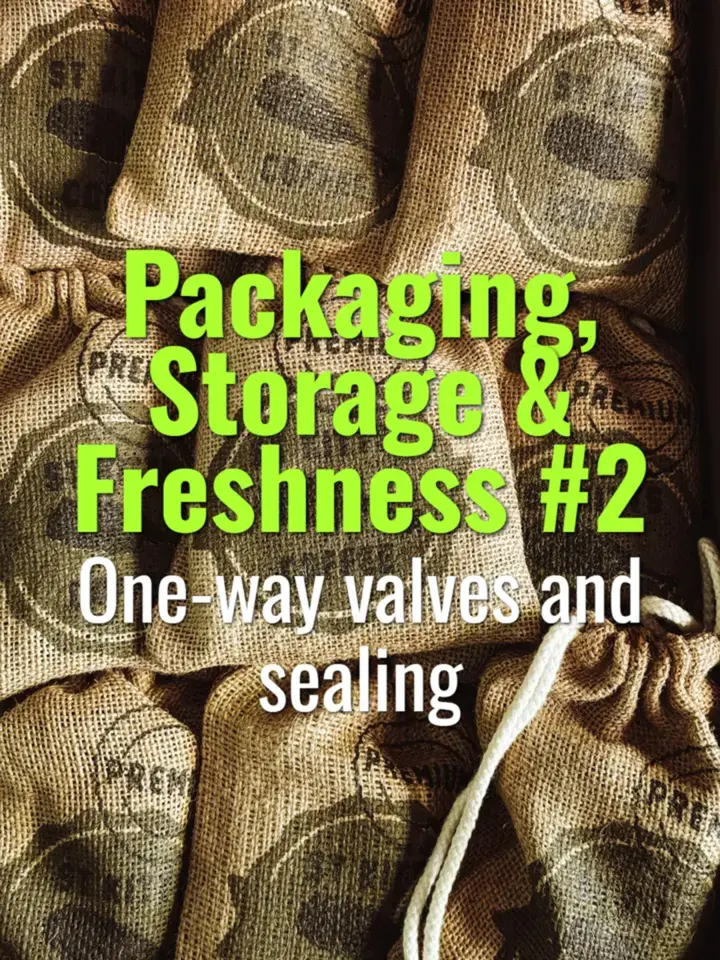One-way valves and sealing
The role of one-way valves and proper sealing in coffee packaging, ensuring freshness by balancing degassing with oxygen protection.
- Coffee Basics Nerds
- 2 min read
Article 2 of 12 in Packaging, Storage & Freshness/

Why One-Way Valves Matter
- Freshly roasted coffee releases CO₂ for days to weeks after roasting.
- Without a valve, sealed bags may swell or burst.
- With a valve, CO₂ can escape while preventing oxygen from entering.
Functions of One-Way Valves
- Gas Release: Lets excess CO₂ out without compromising bag integrity.
- Oxygen Protection: Prevents staling caused by oxygen ingress.
- Aroma Retention: Minimizes aromatic loss compared to open venting.
Sealing Practices
- Heat Sealing: Industry standard for creating an airtight barrier.
- Resealable Zippers: Allow consumers to close bags after opening but must still be paired with a valve.
- Nitrogen Flushing: Sometimes used before sealing to displace oxygen and prolong shelf life.
Packaging Materials
- Foil Laminates: Provide strong barrier against oxygen, light, and moisture.
- Kraft Paper with Liners: Eco-friendly but less protective unless layered with barrier films.
- Clear Plastics: Showcase beans but often weaker against oxygen—best combined with valves and secondary barriers.
Practical Considerations
- Position of valve affects aroma release; usually placed high on the bag.
- Valves should be tested for function—blocked or faulty valves compromise freshness.
- For home storage, once opened, reseal tightly or transfer beans to airtight containers.
Summary
One-way valves are critical in modern coffee packaging, allowing CO₂ to escape while blocking oxygen. Combined with proper heat sealing and barrier materials, they preserve coffee freshness, prevent bag swelling, and ensure optimal quality from roaster to consumer.